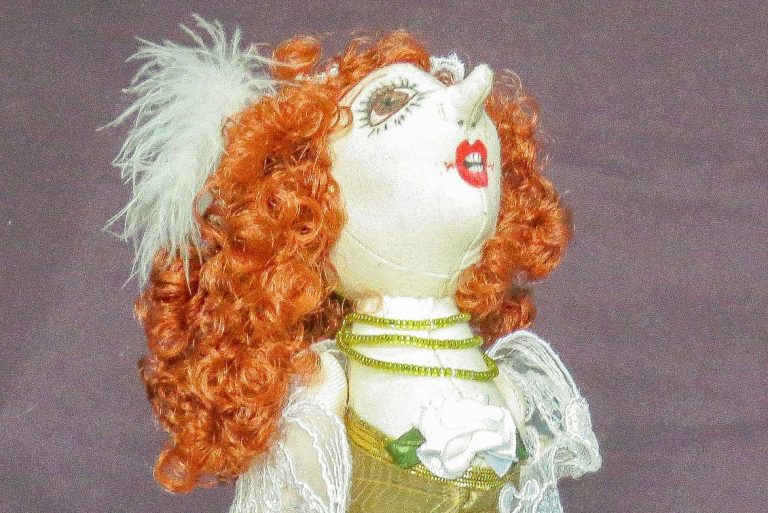
The Art of Doll Hair: Techniques for Attaching Hair to Art Dolls
By Nora Sims
Creating hair for art dolls is a critical step in bringing one’s creations to life. There are many methods one can use and the method one chooses will dramatically influence the doll’s final appearance, texture, and overall aesthetic. In her article 'How to Create Doll Hair', Meghan McInnis does an excellent job at explaining the many procedures and considerations one should take into account when creating doll hair. Listed below are several popular methods for attaching hair to art dolls.
Using Fibers to Create Hair
Fibers include yarns, embroidery floss, and wools. Each category offers a different look and solution, but the method of attaching the “hair” to the doll is the same. Yarn is a versatile and accessible material for doll hair. Embroidery floss provides a sleek and shiny texture for doll hair and works well for creating smooth and straight hairstyles. Wool is naturally curly and is excellent for achieving a natural, curly look without much styling.
To create hair using fibers, cut the strands of fibers to the desired length. Start at the nape of the doll's neck and work upwards, sewing or gluing the fibers onto the head. For a more refined look, one can consider crocheting a wig cap and attaching the individual yarn strands to it.
Wefted Hair: Wefted hair involves attaching strips of pre-made hair to the doll’s head. These wefts can be made from synthetic fibers or natural hair. Using glue or by sewing, the wefted hair is affixed, again starting from the bottom of the head and moving upwards.
Rooted Hair: Rooting hair is a meticulous process where individual strands are inserted into the doll’s scalp using a felting needle. This technique creates a very realistic appearance, especially popular with reborn dolls. After rooting the hair, a small amount of glue is applied inside the head to secure the strands.


Wigs: Creating or purchasing a wig cap that fits the art doll’s head allows for a removable and interchangeable hairstyle. In her tutorial on how to prepare fibers to be used in the creation of art doll wigs, Adele Po walks one through each step. The wig method is perfect for dolls that require versatility in their look or for collectors who enjoy changing their doll’s hairstyles.
Painted Hair: For a highly stylized or detailed look, consider painting the hair directly onto the doll’s scalp. This method is often used for smaller dolls or as a base for other hair techniques. Painted hair can add intricate details and shading that mimic real hair.
Painted Hair: For a highly stylized or detailed look, consider painting the hair directly onto the doll’s scalp. This method is often used for smaller dolls or as a base for other hair techniques. Painted hair can add intricate details and shading that mimic real hair.
Conclusion
Choosing the right method for attaching hair to one’s art doll depends on the style, realism, and creativity one wishes to achieve. Each technique offers unique benefits and can be adapted to suit hairstyle. The hair is attached to the wig cap in sections using glue. This method is perfect for dolls that require versatility in their look or for collectors who enjoy changing their doll’s hairstyles.
We need your consent to load the translations
We use a third-party service to translate the website content that may collect data about your activity. Please review the details in the privacy policy and accept the service to view the translations.
